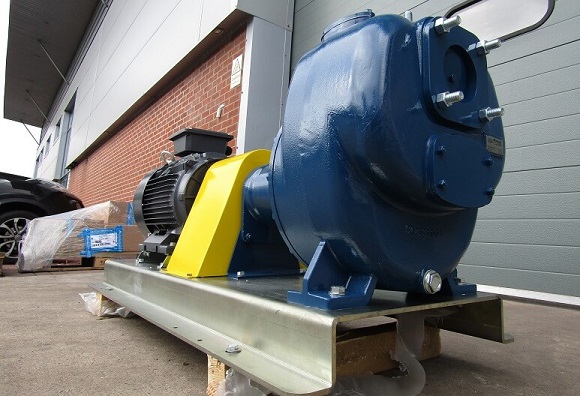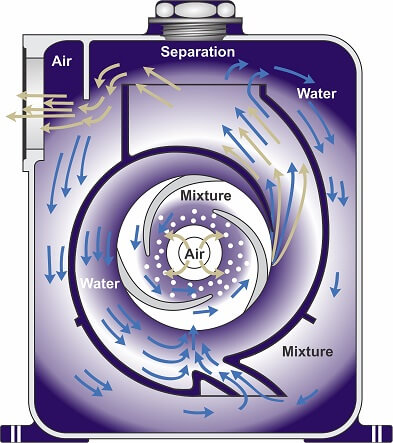Self-priming Centrifugal Pump for Quarry Wheel Wash
 What is a Wheel Wash and Why are they Used
What is a Wheel Wash and Why are they Used
Wheel wash systems are necessary at locations such as quarries, construction sites, landfills, and mines, they ensure public roads are kept safe and clean. HGV vehicles attract large amounts of mud, clay, gravel, dust, and contaminants as they move around site, this needs to be removed before they enter public highways to avoid causing slippery roads and mud/stones spraying onto other vehicles.
Wheel wash cleaning systems remove debris from the wheels and undercarriage by means of either a spray bar or bath. The water is supplied from a main storage tank or bowser and a pump is used to transfer the water through the spray bars at high flow rates. The pump is triggered by infra-red sensors when the vehicle enters the ramp, for efficiency and to avoid wastage, the water is recycled back into the main tank for use on future vehicles.
Application Background
A manufacturer of wheel washing machines approached us as they were having a lot of difficulty with lead times from their previous supplier of pumps. They need self-priming centrifugal pumps for their systems as the feed tank is located below ground, they used submersible pumps in the past but were having a lot of issues with maintenance.
Submersible pumps are immersed in the fluid and this can cause difficulties with maintenance, they need to be lifted out of the liquid to perform repairs and to check their condition, quite often confined space training is also required. Their initial purchase cost can be low; however, the ongoing upkeep costs can far exceed that of surface dry mounted alternatives.
Read our Self-Priming Pumps vs Submersible Pumps Guide Here
Why a Self-Priming Pump was used
A surface mounted self-priming pump was the perfect solution for this OEM, the unit can be situated above the supply tank as the special design enables it to handle mixtures of liquids with entrained gas. This means that air can be evacuated from the suction pipe which then draws the fluid up and into the pump rapidly. The shape of the casing allows the water the recirculate within the body until all the air is removed, this design also ensures that water always remains inside the casing to avoid causing damage by dry running when the pump must reprime.
The self-priming pump we supplied can produce flow rates up to 180m³/hr and can pass solids up to 50mm in diameter should any debris be recycled back into the feed tank. The fact it is located above the water also enables site engineers to easily monitor the condition of the pump and perform repairs quickly and efficiently. The volute and body are constructed from ductile iron with a 200HB hardness, this will increase the lifespan of the components and resist against premature erosion and corrosion. This in turn will reduce the amount of maintenance required, downtime and the cost of spare parts exponentially.
The site now has a robust and reliable pumping system that will keep the vehicles clean and ensure roads are kept uncontaminated and safe for other users.
Here is the specification of the supplied unit:
Model: | Self-priming centrifugal pump with electric motor mounted on baseplate |
Fluid: | Water |
Materials: | Ductile cast iron casing and impeller |
Inlet/Outlet: | 4” (50mm solids passage) |
Flow rate: | 180m³/hr Maximum |
Head: | 53m Maximum |
Motor: | 22Kw, 2900RPM |





